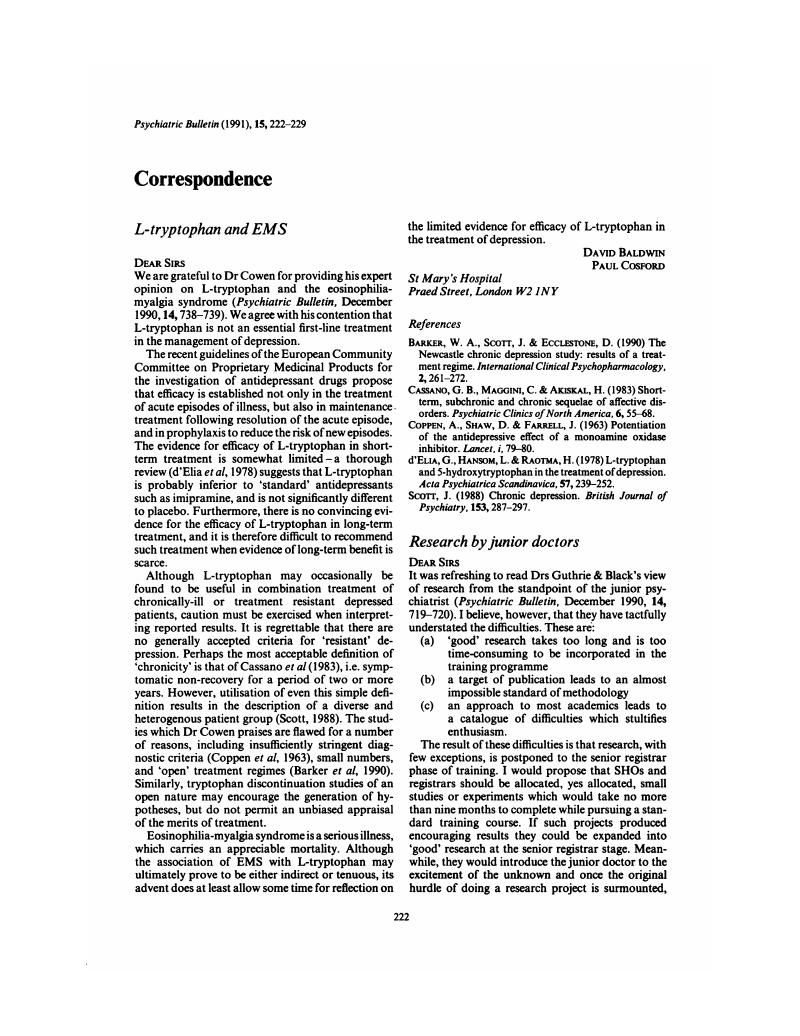No CrossRef data available.
Article contents
L-tryptophan and EMS
Published online by Cambridge University Press: 02 January 2018
Abstract
An abstract is not available for this content so a preview has been provided. As you have access to this content, a full PDF is available via the ‘Save PDF’ action button.

- Type
- Correspondence
- Information
- Creative Commons
- This is an Open Access article, distributed under the terms of the Creative Commons Attribution (CC-BY) license (http://creativecommons.org/licenses/by/4.0/), which permits unrestricted re-use, distribution, and reproduction in any medium, provided the original work is properly cited.
- Copyright
- Copyright © Royal College of Psychiatrists, 1991
References
Barker, W. A., Scott, J. & Ecclestone, D. (1990) The Newcastle chronic depression study: results of a treatment regime. International Clinical Psychopharmacology, 2, 261–272.Google Scholar
Cassano, G. B., Maggini, C. & Akiskal, H. (1983) Short-term, subchronic and chronic sequelae of affective disorders. Psychiatric Clinics of North America, 6, 55–68.Google Scholar
Coppen, A., Shaw, D. & Farrell, J. (1963) Potentiation of the antidepressive effect of a monoamine oxidase inhibitor. Lancet, i, 79–80.Google Scholar
d'Elia, G., Hansom, L. & Raotma, H. (1978) L-tryptophan and 5-hydroxytryptophan in the treatment of depression. Acta Psychiatrica Scandinavica, 57, 239–252.Google Scholar
Scott, J. (1988) Chronic depression. British Journal of Psychiatry, 153, 287–297.CrossRefGoogle ScholarPubMed



eLetters
No eLetters have been published for this article.